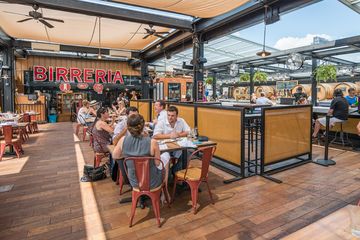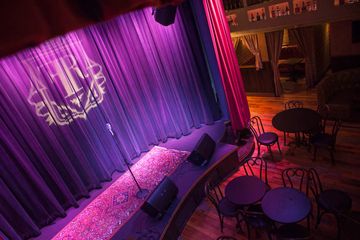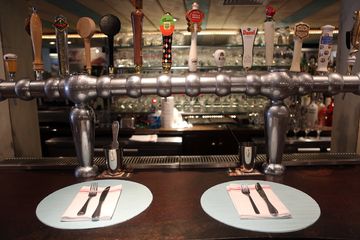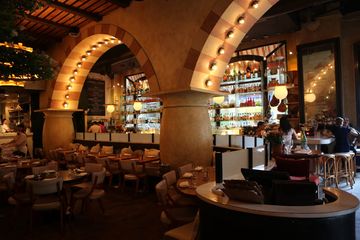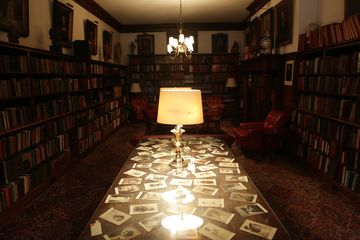Renowned Alsatian Chef Antoine Westermann opened his first restaurant, Le Buerehiesel, at twenty-three years old. For several years, the self-taught chef continued to prepare memorable cuisine, earning the restaurant an illustrious three Michelin stars. In 2006, he had those stars recalled in order to escape the creative constriction that accompanied them, and in 2007, he ceded the restaurant to his son. Chef Westermann’s more recent restaurant endeavors offer sophisticated cuisine sans pomp. In Paris, he is the proud chef and owner of four such restaurants - Mon Vieil Ami, The Durant, La Dégustation, and Le Coq Rico. Translating to “Rico the Chicken, ” the first Le Coq Rico opened in 2011 as a restaurant entirely devoted to poultry. After all, the refined chef’s cuisine of choice is fried chicken and French fries. Before bringing Le Coq Rico to Manhattan in 2016, Westermann spent a couple of months sourcing poultry and establishing connections with farmers across the US that adhered to his standards of quality as part of his exploration of “American terroir. ” Unbeknownst to the chef at the time, the space he chose in Gramercy resides next to Theodore Roosevelt’s birthplace, which houses a collection of taxidermy birds. “This one just felt right, ” the staff joked. As to be expected from a chef of Westermann’s caliber, the menu at Le Coq Rico in New York is anything but ordinary. The minimum slaughtering age of the specialty whole birds served is ninety days, more than double the forty-day standard, and Catskill Gunea Fowl are given one-hundred and thirty days. “After that they become a rooster, ” I was informed. Another specialty dish, the “baeckeoffe, ” originates from an Alsatian laundry day tradition. When the women were busy with laundry and did not have the time to cook, they would drop off a marinade of potatoes, beef and sauces to a baker, who would seal the casserole dish with dough and let it cook slowly. Westermann’s version employs chicken, truffles, and white wine. Watching some of the other dishes come out, I would have never guessed that they were all the same species. The playful giblets platter veiled the bird’s offal with elegant skewers, spiced croquettes, glossy wings, and horseradish toast. A foamy butter bath with micro greens overlay the slow-cooked guinea fowl egg, and I was relieved to find out that the tomato and poultry tartare was not raw, but instead similar to an elevated chicken salad encircled by caper sauce. Birds play a role in other parts of the restaurant, too. In addition to French and American wines displayed in a pristine wine cave, the bar offers a bird-themed cocktail program. One of the most popular, The Elvis in the Sky, is an alcoholic take on the singer’s famed peanut butter, banana and bacon sandwich. The “Duck Fitch, ” a mix of gin, turmeric, ginger, and mint, is named for the celebrated polymath artist, Doug Fitch. Having lived with a bird for a month after a live performance piece, Doug was deemed the perfect candidate to design the cheerful rooster that has become Le Coq Rico’s emblem. His backlit, blue-and-white painting is on view for guests seated in the main dining area or at the bar that faces the open kitchen. Serving simple food expertly prepared, Chef Westermann is not only a master in the kitchen, but an excellent mentor as well. Floor Manager and Sommelier Adrien Boulouque could not be more thankful for his fifteen years of experience working with the humble and soft spoken chef. “I met him in Washington D. C. and now I am here, ” he mused. “It is all about sharing and respect. ” This respect is geared towards the staff, the guests, and, of course, the birds.

